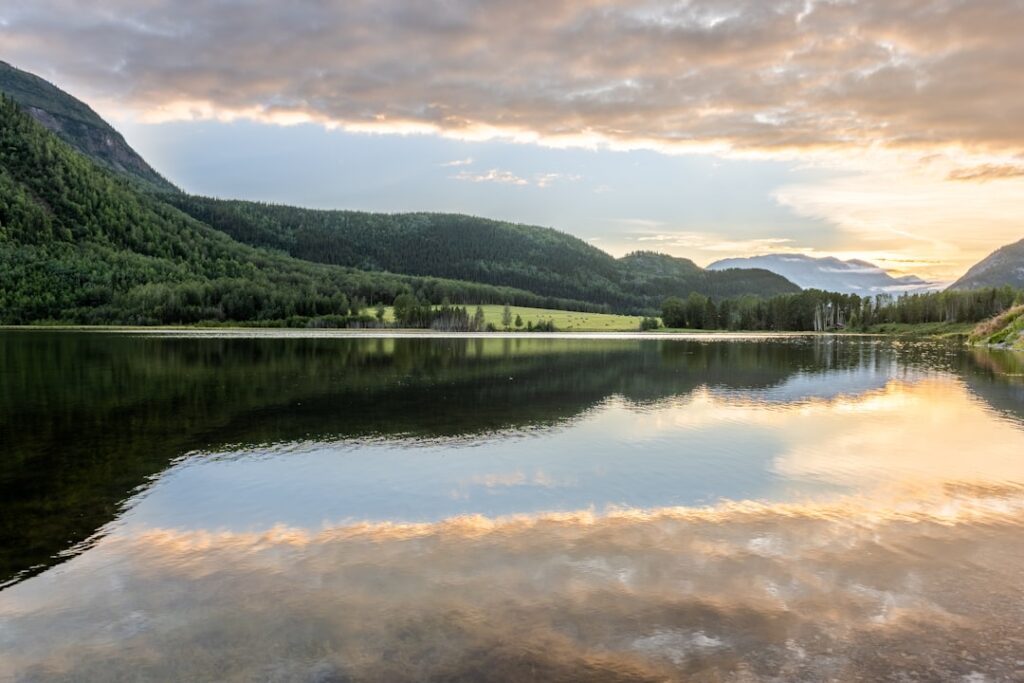My annual retreat to a cabin on Lake Camanche has always been an exercise in disconnecting. This year, however, a recurring phenomenon captured my analytical curiosity. Each evening, as the sun dipped below the treeline, the acoustic landscape of the lake transformed. Conversations from a campsite a half-mile across the water, inaudible during the day, became startlingly clear. It wasn’t just quiet—the sound had a distinct, crisp fidelity that defied the distance. My initial assumption, that it was merely the absence of daytime noise, felt incomplete. I decided to treat this as a field study, gathering data to understand the underlying physics.
The Observational Setup
My methodology was simple but consistent. For three consecutive days, I used a sound meter app on my smartphone and a digital thermometer to take readings at two key times: 2:00 PM and 9:00 PM. I focused on a consistent sound source from the distant campsite—a generator with a steady, low hum.
- Daytime Data (2:00 PM): The average air temperature was 31°C (88°F). The generator’s hum was barely detectable, registering just 2-3 decibels (dB) above the ambient noise floor. The sound was muffled and indistinct.
- Evening Data (9:00 PM): The average air temperature had dropped to 19°C (66°F). In stark contrast to the afternoon, the generator’s hum was clearly audible, registering a consistent 8-10 dB above ambient levels. More impressively, I could discern individual voices and laughter from the same site.
The data confirmed my subjective experience: sound didn’t just seem louder at night; it measurably traveled with less attenuation. The critical variable appeared to be the time of day and the associated temperature change. This led me to investigate the principles of sound propagation in varying atmospheric conditions.
The Physics of Daytime Sound Attenuation
The daytime readings can be explained by a standard atmospheric temperature profile. The sun beats down on the lake and the surrounding land, warming the air near the surface. As altitude increases, the air generally gets cooler. Sound waves travel faster in warmer air. So, when a sound wave travels out over the lake during the day, its lower portion (in the warmer air) moves faster than its upper portion (in the cooler air). This difference in speed causes the sound wave to refract, or bend, upwards and away from the surface. The sound energy is essentially launched into the sky, away from any potential listener on the other side of the lake.
The Evening Phenomenon: Temperature Inversion
The key to the evening’s acoustic clarity is a phenomenon known as temperature inversion. While the air cools quickly after sunset, a large body of water like a lake retains its heat far more effectively. This creates an unusual atmospheric condition: the layer of air directly above the water’s surface becomes cooler than the layer of air above it.
My 9:00 PM temperature readings supported this. While the ambient air temperature was 19°C, a thermometer held just a few inches above the water’s surface read 21°C, matching the water temperature. This confirmed a shallow layer of warm air was “trapped” beneath a cooler mass of air above it—a classic temperature inversion.
This inverted temperature gradient has the opposite effect on sound waves. Now, when a sound wave travels out over the water, its upper portion is in a warmer layer of air than its lower portion. The top of the wave speeds up, causing the entire wave to refract downwards toward the water’s surface.
The Acoustic “Duct”
This downward refraction is the secret. Instead of escaping into the sky, the sound energy is bent back towards the listener. The smooth surface of the calm lake then reflects the sound wave upwards, where it again enters the inversion layer and is refracted back down.
This process creates an incredibly efficient “acoustic duct” or “sound channel” along the water’s surface. The sound waves are effectively trapped between the water and the inversion layer, allowing them to propagate over vast distances with minimal loss of energy. This explains not only why the generator was louder but also why the fidelity was so high; the signal was preserved within this natural waveguide. The lack of obstacles like trees or buildings over the open water further enhances this effect, making a calm lake on a summer evening one of the most acoustically perfect long-distance environments you can find in nature. My simple case study had revealed a beautiful intersection of thermodynamics and wave physics played out across the water.
Photo by Suzanne Rushton on Unsplash

